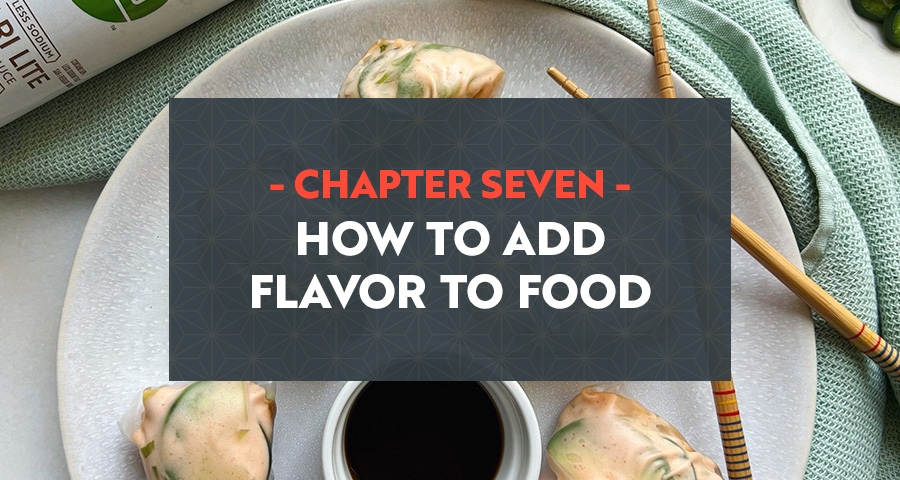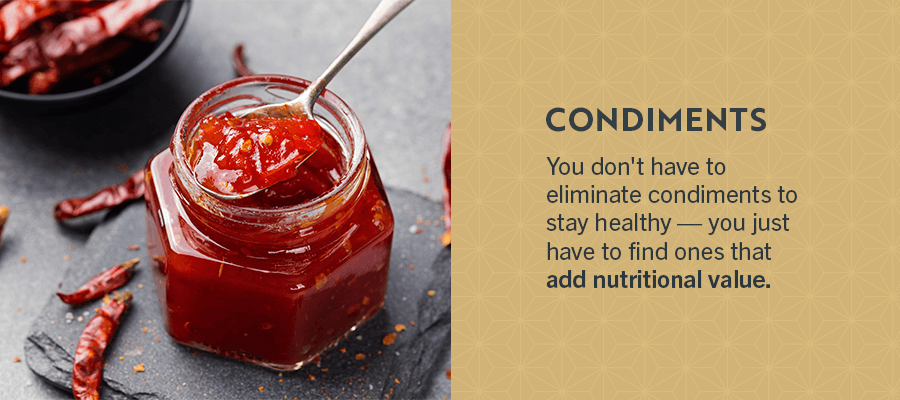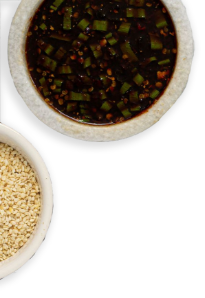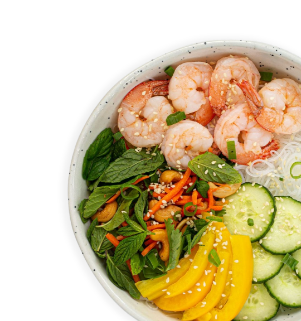
chapter 7: how to add flavor to food
Adding flavor to food can transform each of your meals. Rich combinations and textures can enhance the natural flavors of each ingredient. However, the key to adding flavor is ensuring you don’t add too much. Sauces, condiments and some ingredients can add extra calories and fat, so you must be sure to incorporate nutritious ingredients. Learn how to flavor food with these additions.
Sauces
Sauces can complete pasta meals and meat dishes with a savory combination of flavors. Some restaurants make the common mistake of overloading their food with sauces, drowning plates in extra calories. Make or enhance your sauces in-house and opt for fresh ingredients, herbs and spices. Additionally, be sure to measure each scoop. Try San-J products if you’re looking for more nutritious sauces for your meals.
Fresh and Dried Herbs and Spices
Spices and herbs are powerful. Their aromatic essence and rich flavors can transform even simple dishes. Less can be more with intense spices, so play around with recipes to find what works best for your meals. You can cook protein with nutritious oil and spices and skip the extra salt and calories without sacrificing flavor.
Zest
Fruit zest, like orange or lemon, can be perfect for salads and other dishes. All you need is fresh produce and a grater. You can top meals with garnish and make your dish look beautiful while enriching flavors at the same time.
Acids
Citrus and vinegar acids can play a significant role in healthy cooking. These ingredients don’t have unnecessary fats, calories or sugars, so get creative with your combinations. Acids act like salt and can meld flavors while brightening other fresh ingredients, helping your dish stand out in taste and sight.
Heat
Peppers and other intense ingredients can add spice and flavor to your menu. You can chop different varieties on the plate or find hot sauces to drizzle. Hot sauce typically has few calories and low amounts of fat or carbs, making it a healthy way to enhance your food.
Condiments
You don’t have to eliminate condiments to stay healthy — you just have to find ones that add nutritional value. Mustard, chutney, bean purees, horseradish and salsas can give excellent flavor bursts without the fat that many other condiments have.

Cooking Method
How you cook your meats and veggies can affect how they taste when you serve them. Pan-searing and broiling can intensify meat flavors. Roasting vegetables can produce a smoky flavor. Topping with herbs and spices can enhance these flavors if you cook with them.
Onions and Garlic
Garlic and onion have intense scents and flavors. Cooking with these ingredients can bring out the natural tastes of other ingredients and lace each bite with flavor. You can also use them to create rich sauces for poultry and meat your guests will love.
Flavorful Ingredients
Bold ingredients can act similarly to spices and produce natural aromas and flavors that make dishes unique and delicious. Pomegranate seeds, cilantro and chipotle peppers can spice up any dish and create powerful combinations your guests won’t be able to resist.
Keep Your Menu Nutritious But Flavorful With These Tips
Cooking with flavor is an art, and your delicious and nutritious combinations can captivate your customers. Reimagine your current menu with a new palate of spices, herbs and flavorful ingredients, or find bright and refreshing recipes to create a new food selection.
Finding the right products is critical when learning how to season food. At San-J, we know all about creating health-conscious meals, and you can contact us to find San-J products for your kitchen.



